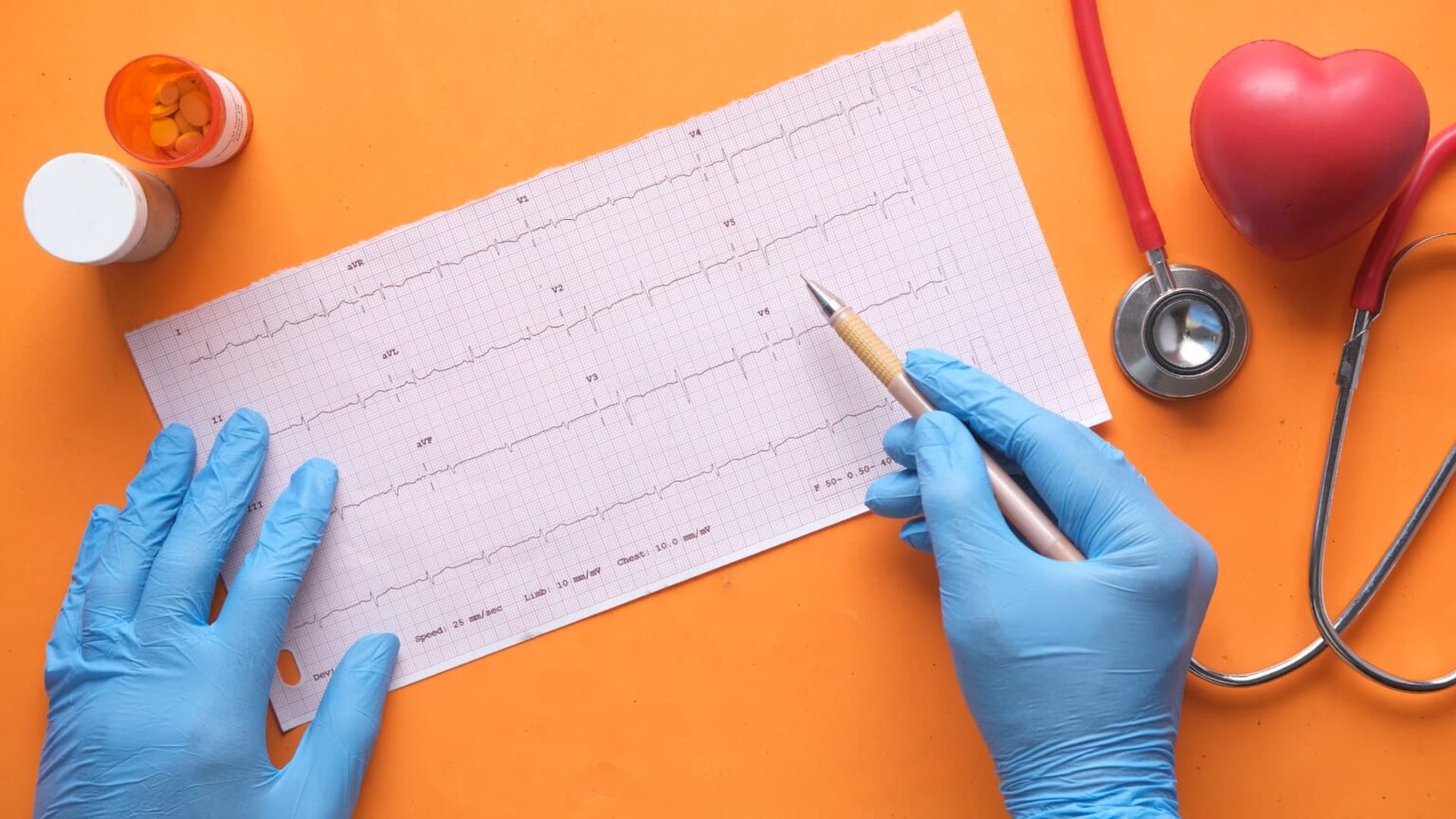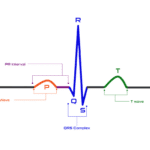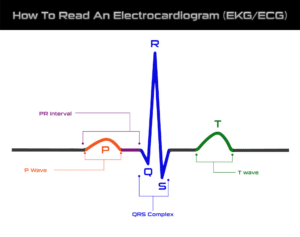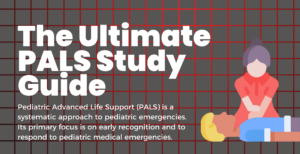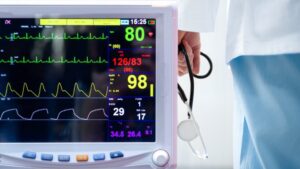Ventricular tachycardia (Vtach) and ventricular fibrillation (Vfib) are two potentially life-threatening heart arrhythmias that originate in the ventricles of the heart. The electrical activity of the heart varies with Vtach vs. Vfib and different treatments might be indicated. Differentiating between these two arrhythmias begins with a comprehensive understanding of how to decode ECG results.
What is VTach?
Normally, electrical signals in the heart originate in the sinoatrial (SA) node. Known as the heart’s natural pacemaker, the SA node begins each heartbeat and moves it through the heart in a coordinated manner.
During Vtach, one of the heart’s ventricles takes over the pacemaker duty and causes the heartbeat to speed up. In addition to a sensation that the heart is beating too fast, a patient might experience:
- Shortness of breath
- Light-headedness or fainting
- Chest pain
Some patients do not experience any symptoms with Vtach, particularly if the episode is brief (lasting under 30 seconds), known as non-sustained Vtach. Non-sustained Vtach with symptoms may be treated with medication to control the heart rate.
Vtach that lasts more than 30 seconds is known as sustained Vtach and requires immediate medical attention. Patients that are stable may be given immediate intravenous medication to restore the heart’s rhythm. If the patient is not stable, electrical cardioversion is usually the next step. If no pulse is detected with Vtach, defibrillation can be used to shock the heart back to a normal rhythm.
Vtach that is not treated quickly may progress to Vfib, which is an even more dangerous arrhythmia that can lead to cardiac arrest within seconds.
Key Characteristics of VTach on ECG
- Wide QRS complexes greater than 0.14 seconds
- QRS complexes are not preceded by the usual P waves
- R intervals are typically regular (not always, however)
- Ventricular rate is usually between 150 and 250 beats per minute
- No atrial rate can be determined
Unraveling the Mystery of Vfib
Vfib is the most deadly of all heart arrhythmias. It is characterized by a fast, abnormal heart rhythm caused by ventricle walls quivering or twitching instead of pumping blood. It can lead to sudden cardiac arrest and sudden cardiac death. Prior to Vfib, a patient may exhibit the following symptoms:
- Shortness of breath, gasping for air
- Chest pain
- Lightheadedness
- Nausea
- Sudden collapse with loss of consciousness
Vfib can come on suddenly and without warning. Without immediate medical attention, including CPR and defibrillation, the victim is unlikely to survive.
Key Characteristics of VFib on ECG
- No clear QRS complexes, P waves, or T waves
- Electrical activity is disorganized
- The rate appears very rapid – up to 600 beats per minute
- Coarse Vfib resembles a squiggly line, waves are 3 mm or larger
- Fine Vfib features an almost straight line, waves are less than 3 mm
VTach vs VFib ECG: Spot the Difference

The second ECG shows Vtach, with wide, irregular QRS complexes and occasional P waves. It is difficult to see separation between the QRS complex and the T wave.
How to Read ECG Results Like a Pro
The ECG features these essential components:
- P-Wave – records electrical activity in the atria
- PR Interval – records atrial polarization to beginning of ventricular depolarization
- QRS Complex – records electrical activity in the ventricles, features a Q wave (first downstroke), R wave (first upward deflection), and S wave (first downward deflection)
- T-Wave – records relaxation of atria
The first step should always be to check the P wave, since abnormalities in the P wave indicate a heart arrhythmia. Next, measure the PR interval and the QRS complex. Examine the overall rhythm to see if it is in an organized or disorganized pattern. Finally, determine heart rate by counting the large boxes between R waves and dividing that number by 300.
ECG Results Explained
You started learning to read by learning your ABCs – to learn how to read ECG results, you need to know your ADDs:
- A is for Amplitude: Wave height measures the voltage of the beat
- D is for Deflection: Determine the lead the deflection is coming from
- D is also for Duration: Wave and interval duration
The Clinical Implications of VTach vs. VFib
Vtach and Vfib are both medical emergencies that need to be identified and treated immediately. The ability to distinguish between the two is necessary to ensure appropriate treatment. Non-sustained Vtach may be addressed with medication in some cases, while Vfib and pulseless Vtach require immediate CPR and defibrillation.
Making the Right Call
When seconds count, your ability to quickly decode an ECG to diagnose Vfib vs. Vtach can make the difference between life and death for your patient. Getting training and certification now can prepare you for cardiac arrest emergencies in the future. Make sure you are equipped with the knowledge and practice you need to give your patients the highest level of care.
SureFire CPR’s Approach to EKG Mastery
An EKG certification course from SureFire CPR will teach you skills and give you the confidence you need to assess cardiac emergencies. Our instructors are all healthcare professionals who understand reading an ECG doesn’t have to be as hard as it may seem. By breaking down complex information into digestible steps, we can help you get EKG certified, so join now. We offer same-day completion certificates and CEs are available for participants.
Enroll in SureFire CPR’s EKG Certification
EKG certification can help you take the next step in your career and raise the bar on your ability to care for your patients. With instructors that are committed to making classes interesting and fun, you will find it easy to focus during training and retain the information long after your course is complete. We offer courses online, in-person and on-site. Check out our class schedule today to find the course that works best for you.

